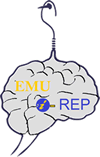ÖZ:
Müzeler, son 20 yılda giderek daha interaktif, geniş halk topluluklarıyla
bütünleşen, eğitsel bilgi deneyimi sunan ve sosyal etkileşim amaçlı kullanılan
yapılara dönüşmüştür. Müze kavramı daraltıldığı zaman ise, birçok faklı
içeriği/temayı kategorik olarak işleyen müzelerle karşılaşılmaktadır. Yakın
zamanlarda tercih edilen bir tematik müze türü de ‘Kent Müzesi’dir. Kent Müzesi,
kent kimliği olgusunun ortaya çıkmasından itibaren, insan ve şehir arasındaki
etkileşimi gözler önüne seren, öznesi halk kahramanları değil sıradan kent insanının
ta kendisi olan, kültür, gelenek, yaşam tarzı gibi insani öğeleri hatırlatma, tanıtma ve
geleceğe aktararak kente ait bir bellek oluşturma misyonu barındıran müze türüdür.
Kuzey Kıbrıs’ta tarihsel açıdan çok önemli kentlerin varlığına rağmen bu
tanıma uyan anlamıyla herhangi bir Kent Müzesi’nin bulunmayışı, böyle bir ihtiyacın
varlığını göstermektedir. Nüfusu dinamik olan Kuzey Kıbrıs’ta, kentlerdeki
geleneksel yaşam sürekli dış kültürlerden etkilenmekte, dönüşmekte ve erozyona
uğramaktadır. Kent insanı, geleneksel yaşam şeklinin ve günlük alışkanlıklarının
ancak bir kısmını sonraki nesillere aktarabilmektedir. Böylece kültürel ve geleneksel
birçok öğenin de unutularak yok olmasının önü açılmaktadır. Bu noktada, kent ve
kent kimliğinin geçmiş ve mevcut durumunun kayıt altına alınarak gelecek nesillere
aktarılmasını sağlayacak kent müzelerinin topluma kazandırılması gerekli bir durum
oluşturmaktadır.
Kuzey Kıbrıs’ta bulunan Mağusa, dinamik ve sürekli gelişim gösteren
nüfusu, zengin kültürel ve tarihi dokusu ile Kent Müzesi ihtiyacının öne çıktığı bir
yerleşimdir. Sivil toplum örgütleri ve bilim çevrelerinin yeni bir müze gerekliliğini
birçok kez ortaya koymuş olmasından da hareketle, Mağusa için böyle bir ihtiyacın
giderilmesine yönelik bir bilimsel çalışmaya ihtiyaç duyulduğu izlenmektedir. Bu tez
kapsamında, söz konusu ihtiyaca yönelik olarak, Mağusa/Suriçi’nde, 252-260 nolu
parsellerin yer aldığı yapı adasındaki tarihi yapıların, çağdaş tasarımlar ile müze
olarak yeniden işlevlendirilmesi önerilmekte ve bu öneri için gerekli bilgi
altyapısının oluşturulması hedeflenmektedir.
Yer seçiminde, söz konusu yapı adasının merkezi bir konumda yer alması,
kamu mülkiyetinde olması, işlevsiz veya düşük işlevli, çok değerli tarihi yapıları
barındırması ve yeni ek yapı/ yapılar için gerekli boş alanları içermesi bu yapı
adasının seçilmesindeki etkenlerdir. Çalışma kapsamında bu yapı adasındaki tarihi
yapıların bir kent müzesine dönüştürülmesi ve yeniden kullanımı ve müze işlevi için
gerekli donanımların oluşturulmasında katkıda bulunacak bir ek yapının tasarımına
ilişkin proje önerileri oluşturulacaktır.
In the last 20 years, museums have become increasingly interactive spaces
that integrate with large public communities, provide extraordinary educational
experiences and are used for social communication purposes. When the concept of
museum is narrowed down, we encounter museums that deal with many different
contents/themes categorically. Another type of thematic museum that has been
preferred recently is the 'City Museum'. Since the emergence of the phenomenon of
urban identity, the City Museum concept has been creating a memory of the city by
reminding, introducing, and transferring to the future, human elements such as
culture, tradition and lifestyle, not of folk heroes but ordinary people of the city
themselves. City Museum is a type of museum that has a mission of revealing the
interaction between people and the city.
Despite the existence of historically very important cities in Northern Cyprus,
the absence of any comprehensive museum or a City Museum in the sense that fits
this definition shows the existence of such a need. In Northern Cyprus, which has a
dynamic population, traditional life in cities is constantly affected by external
cultures, transformed and eroded. Inhabitants of the cities can only transfer their
traditional lifestyle and daily habits to the next generations to a limited extent. This
paves the way for many cultural and traditional elements to be forgotten and
disappear. At this point, it is necessary to introduce city museums to the society,
which will record the past and present aspects of the city and its identity and help in
transferring it to future generations.
Famagusta, located in Northern Cyprus, is a settlement, where the need for a
City Museum comes to the fore with its dynamic and constantly developing
vi
population and rich cultural and historical context. Considering that opinion of nongovernmental organizations and scientific circles, which have already demonstrated
the necessity of a new museum many times, it is considered that there is a need for a
scientific study to meet such a claim for Famagusta. Within the scope of this thesis,
in order to meet this expectation, it is proposed to reuse the historical buildings on
the building block of buildings, located on parcels 252-260 in Famagusta/Suriçi as a
museum with a contemporary addition, and it is aimed to create the necessary data
for this proposal.
The factors in choosing this building block are its’ central location, being a
public property, having abandoned or low-use, very valuable historical buildings on,
and empty areas required for new additional building/s. Within the scope of the
study, restoration project proposals for historic buildings and design guidelines for an
additional building have been developed. By the help of this thesis that the
transformation and reuse of the historical buildings in this building block into a city
museum and the creation of the necessary equipment for the museum function.









